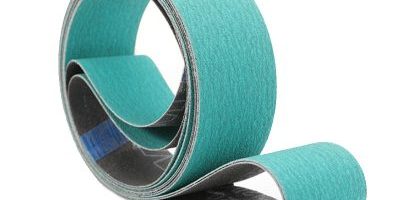Sanding belts are essential tools in various industries, offering versatility and efficiency in surface preparation and finishing tasks. Whether you’re a professional tradesperson or a DIY enthusiast, understanding the key aspects of sanding belts is crucial. In this comprehensive guide, we’ll delve into the world of sanding belts, exploring their types, applications, and best practices for use.
Types of Sanding Belts:
- Aluminum Oxide Sanding Belts: These versatile belts are suitable for general-purpose sanding on materials like wood, metal, and plastics. They are available in various grits to accommodate both coarse and fine sanding tasks.
- Silicon Carbide Sanding Belts: Silicon carbide belts are ideal for sanding harder materials such as stone, glass, ceramics, and metals. They are known for their aggressive cutting action and are often used in automotive bodywork.
- Zirconia Alumina Sanding Belts: Zirconia alumina belts are recognized for their exceptional durability and are designed for heavy-duty applications, including metal fabrication and weld blending. They offer fast material removal and a longer lifespan.
- Ceramic Alumina Sanding Belts: Ceramic alumina belts are heat-resistant and excel in high-pressure applications like grinding and sanding hardened metals and alloys. They are known for their long-lasting cutting abilities.
Applications:
- Woodworking: Sanding belts are extensively used in woodworking for tasks such as surface preparation, edge sanding, and shaping wood components.
- Metalworking: Metalworkers rely on sanding belts for grinding, deburring, and polishing metal surfaces, as well as for shaping and blending welds.
- Automotive: In the automotive industry, sanding belts play a vital role in sanding body panels, preparing surfaces for painting, and refinishing.
- Marine: Boat enthusiasts and professionals use sanding belts for tasks like sanding boat hulls and decks, achieving a smooth and polished finish.
Best Practices for Using Sanding Belts:
- Choose the Right Belt: Select the appropriate type and grit of sanding belt for your specific task and material.
- Maintain Consistent Pressure: Apply even and consistent pressure when using sanding belts to ensure uniform results.
- Check for Wear: Regularly inspect the sanding belt for signs of wear or damage. Replace worn-out belts to avoid subpar results and accidents.
- Safety Gear: Always wear appropriate safety gear, including safety glasses or goggles, a dust mask, and hearing protection if necessary.
- Dust Management: Implement effective dust extraction or ventilation systems to control dust, which can be hazardous to your health.
By understanding the types, applications, and best practices for sanding belts, you can make informed decisions and achieve professional-quality results in your projects. Stay tuned for more in-depth articles on sanding belt techniques and troubleshooting tips.










